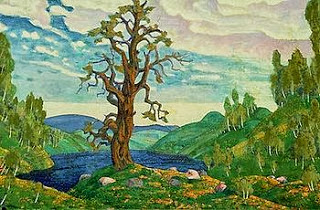Just over a hundred years ago, on May 29, 1913, was premiered a classical music work that for the first time unleashed in the audience little less than a pitched battle between admirers and detractors. Among the attendants were artists and composers. Maurice Ravel found it great and the playwright and future filmmaker Jean Cocteau reacted in the same way, but the old Countess of Pourtales, according to a witness, broke her fan while exclaiming, blind with rage: "This is the first time I´ve been made fun of". Forty people were evicted from the newly opened Théâtre des Champs-Elysées, presumably after calling the police.
It all was dealing with a new, aggressive and revolutionary work: the ballet The Sacre du Printemps, with music by Igor Stravinsky and choreography by the Polish-born Russian dancer and choreographer Vaslav Nijinsky.
That May 29
The mocking laughter of the audience was heard as soon as the Introduction began, soon giving way to the goofs and the whistle. Next, according to conductor Pierre Monteaux, "everything that was at hand was thrown into the orchestra even though we continued to play." The evening had begun with Le Sylphides (with music by Chopin, we know), followed by The Rite of Spring so the outrage was somehow understandable. Despite everything, the last scene was listened to in a restrained silence. After all, in a few more minutes you could enjoy Weber's The Spirit of the Rose, to end up pleasing every people with Borodin's Polovetsian Dances. That was the full program, and you just had to be patient. Thus, the evening came to an end, and with applause, despite the disturbances caused by the irreverent music of the thirty-year-old Russian composer, Igor Stravinsky.
Another commission from Diaghilev
Like The Firebird and Petrushka, the score had been commissioned in 1911 to Stravinsky by the impresario Sergei Diaghilev, founder of the Russian Ballet Company that was all the rage in Paris at the beginning of the last century. After a series of interruptions due to his professional activity, when Stravinsky finally settled on the shores of Lake Leman to escape the Russian winter, in the autumn of 1912, he had pretty much finished the final score, subtitled Pictures of Pagan Russia in two parts.
 |
| Concepts design for Act I, for 1913 production |
A pagan rite
And yes, Diaghilev's idea was to stage a pagan ceremony. Indeed, the play stages a rite of ancient Russia where its primitive inhabitants make a human sacrifice to end winter and help bring the light and warmth of nature back. As Stravinsky recounts in his autobiography of 1936, the idea had already arisen early in his imagination: "One day [in 1910], while working on the last pages of The Firebird in Saint Petersburg I had a fleeting vision ... I saw in my imagination a solemn pagan rite: sage elders, seated in a circle, watching a young girl dance herself to death. They were sacrificing her to propitiate the god of Spring. Such was the theme of the Sacre du Printemps".
 |
| Igor Stravinsky (1882 - 1971) |
Leaving aside the highly novel staging, with almost no specific plot and that one scholar describes rather as a "succession of choreographic episodes", The Rite of Spring completely revolutionized the musical language in vogue, subverting the three basic components of music: melody, rhythm and harmony.
The melody is simple in appearance and its motifs "seem" of folk origin, although it is a renewed folklore, in the Bartók style. But its workmanship, its "form", is new and so is the insistence with which Stravinsky repeats the themes relentlessly, without any intention of leading them to their traditional "development".
Added to this are bitonal exercises, that is, the superposition of two or more tones, with the addition of removing or suppressing certain notes to create ruptures of balance and exacerbate tensions in order to achieve a barbaric primitivism.
The "weird part" of music
More than a hundred years have passed and to lay listeners or not even so this music still seems "weird" to us. A comment on YouTube is surprised to be "on the weird part of YouTube again" but is glad about it, and thanks Stravinski for having "invented the weird part" of the video host when the Internet did not yet exist. Anyway, with The Rite of Spring, Stravinsky achieved the immortal masterpiece, perhaps the greatest score of the 20th century, with an enormous influence on all subsequent composers and so far one of the most represented and recorded works of all classical music.
The original choreography
Although the work is heard today mostly in an orchestral version, we have preferred to offer here the complete performance, the music together with the choreography, as this makes it easier to approach this new, highly intoxicating and revolutionary experience. The choreography is Nijinski's original, recovered and rebuilt by the Chicago Joffrey Ballet Company in 1980 after been believed lost for almost seventy years. During the Introduction, the curtains are not lifted, and the authors of the video have mounted the credits there. The first scene starts at 2:43.
